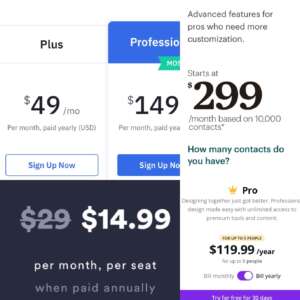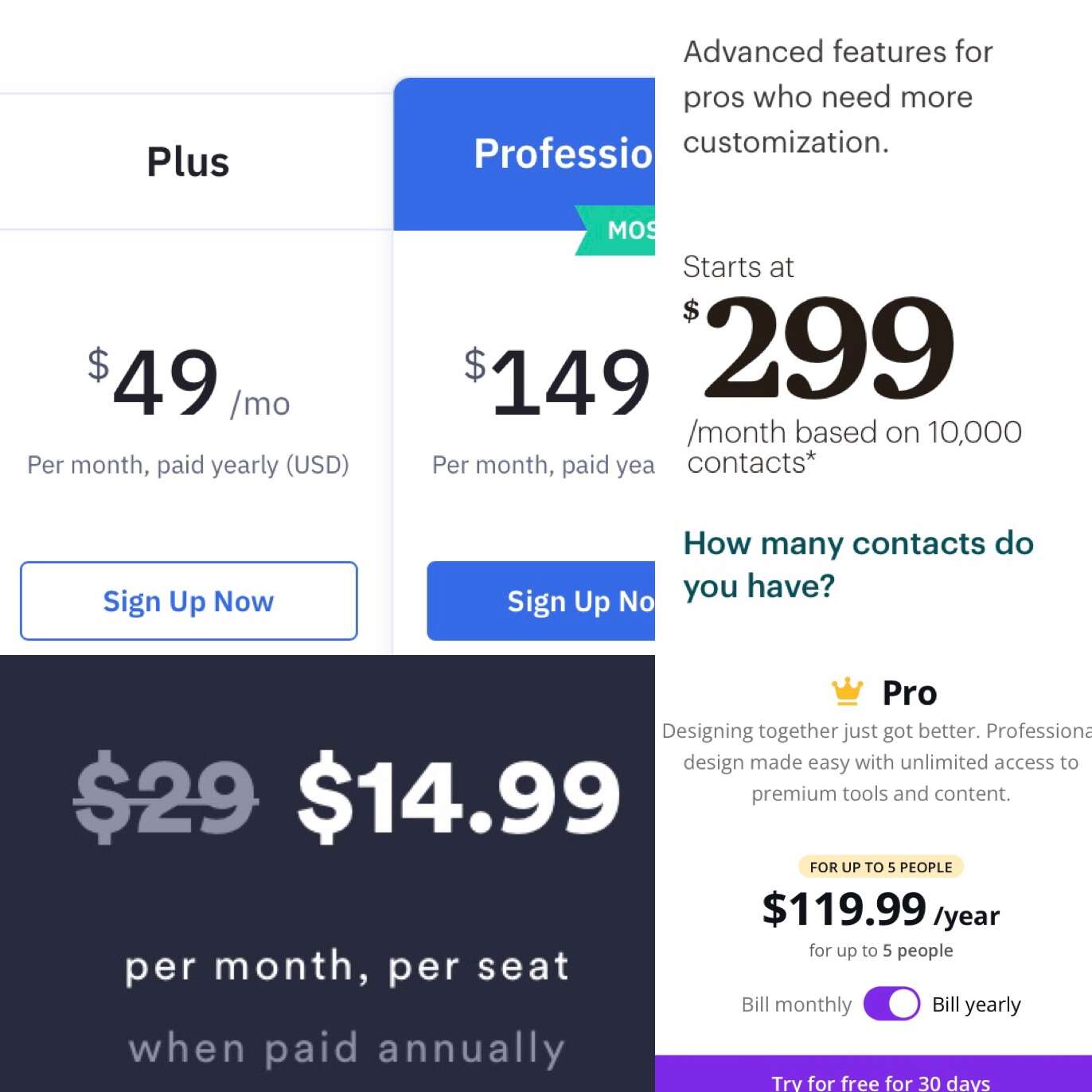“We’re f-ing with your mind, and we’re not even hiding it!”
If you could manipulate someone into thinking your pricing was considerably cheaper than it actually was, and it would only cost you one dollar to do so, would you do it? How about if it cost you 1/10th of a cent to manipulate your buyer into making a purchase?
The gasoline industry has been doing this since the 1930s. Retailers do it all the time, too. And if you’re in the world of SaaS, according to many of the pricing pages I’ve been checking out, you’re doing it, too!
If you’re a buyer, they’re all messing with you!
If you’re a seller, I’d argue it’s not using behavioral science for good.
Last weekend, we crossed the Illinois border into Wisconsin. Our tank of gas was a little light, and after joking with the kids that they’d have to push if we ran out, we were on the lookout for a gas station.

“Wow, it’s hard to believe that the price of gas here in Wisconsin is so much cheaper than Illinois. $3.39 a gallon, and less than a mile north over the border it’s $3.09 a gallon.”
That wasn’t entirely true. The price is actually $3.099 per gallon. There’s a little itty bitty 9 hiding in the corner, isn’t there?
Are gas stations being evil with this trick? That’s up for debate – and below I explain why they do it, and a little history around where it came from.
But why do you, Mr. or Mrs. SaaS provider, do it? Bouncing around to different websites, this collage below are screenshots of the first four sites I even went to. You’re all doing it!
Does the correct value-based pricing for your solutions all happen to end on a 9? What a coincidence! Or, are you intentionally f-ing with people’s brains?
This is a well-known phenomenon. There are two primary reasons why ending your price with a 9 instead of a zero creates a false impression in our brains.
- Our brains read from left to right, deprioritizing based on subconscious increments. A price of $3,999 feels more like $3k to our brains than $4k. As a result…Our brains subconsciously believe the difference between $3,999 and $4,000 is significantly larger than $1.
- Studies have shown that a precise price subconsciously leads a buyer to believe the price is more credible than a general price ending with a zero or a five. In other words, prices of $102.50 or $99.25 are more credible to the buying brain than $100.
So, companies who price their solutions use the gas station approach – 9’s (as pictured above). They are mind tricks. Marketers know them. I was taught about them back in college. But should we be using them?
My personal take? I see them as manipulation, but I may be in the minority. When I see a $xx9, I know it’s not a precise price. It’s an attempt to trick me.
Is that just me? I mean, how about we save the tricks for middle-school birthday party magicians. Instead, we price it the way it should be priced. As James Samuel Knox said in his 1921 book, The Science and Art of Selling…

James Samuel Knox
“If I sell an article and make all the profit, I am not a salesman – I am a robber.”
In other words, what pricing is going to require the correct investment on behalf of the customer while also providing for the right amount of profit for your company? Price it accurately, then don’t be afraid to share it. Have confidence in your price – confidence is contagious – instead of trying to hide behind a little brain trick.
What do you think? Am I over-nerding on this?
Either way, I can’t wait to see the first gas station try to break the cycle…
For those who want to know: The Gas Station History of 9/10s
Back in the early 1930s, the Revenue Tax Act of 1932 created the first federal gasoline tax, placed to help deal with the rising national debt. It was a 1-cent tax, meant to be temporary. Well, guess what…it wasn’t temporary, it stuck around, and became a solid source of tax revenue.
At the time, filling up a tank cost around 10 cents TOTAL. So, that was a significant amount of money, right? Over time, the government sought to raise that tax even more, so they did…by a fraction of a cent.
A gas station wasn’t about to raise their price a whole cent when the tax was only a fraction of a cent. That would drive people to stop buying from them. The margins were already super tight. So, gas stations started pricing gas in fractions of cents.
I can’t figure out how everyone standardized on 9/10ths of a cent, as the government still taxes on multiple decimal points of the dollar – into fractions of pennies. But in the 1970s, everyone standardized on 9/10th. So, your gas price is $3.099.
If the gas station rounds down, over the course of a day, they’ll actually lose some money.
If the gas station rounds up and just charges $3.10 per gallon, psychology says they’ll lose money, too.
No gas retailer has really stuck their neck out to challenge it…well, I found one article mentioning a station that claims he lost $23 per day by just eliminating the 9/10th of a cent. I just don’t think he did it right…
When pricing your products, it’s not that hard. Embrace transparency.






0 Comments